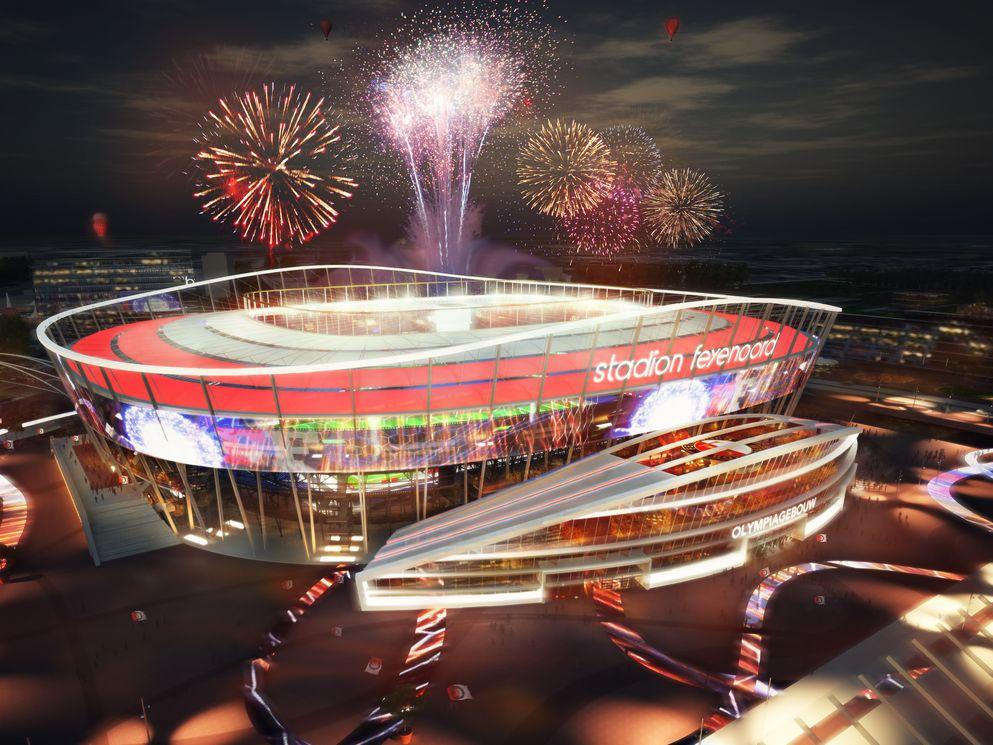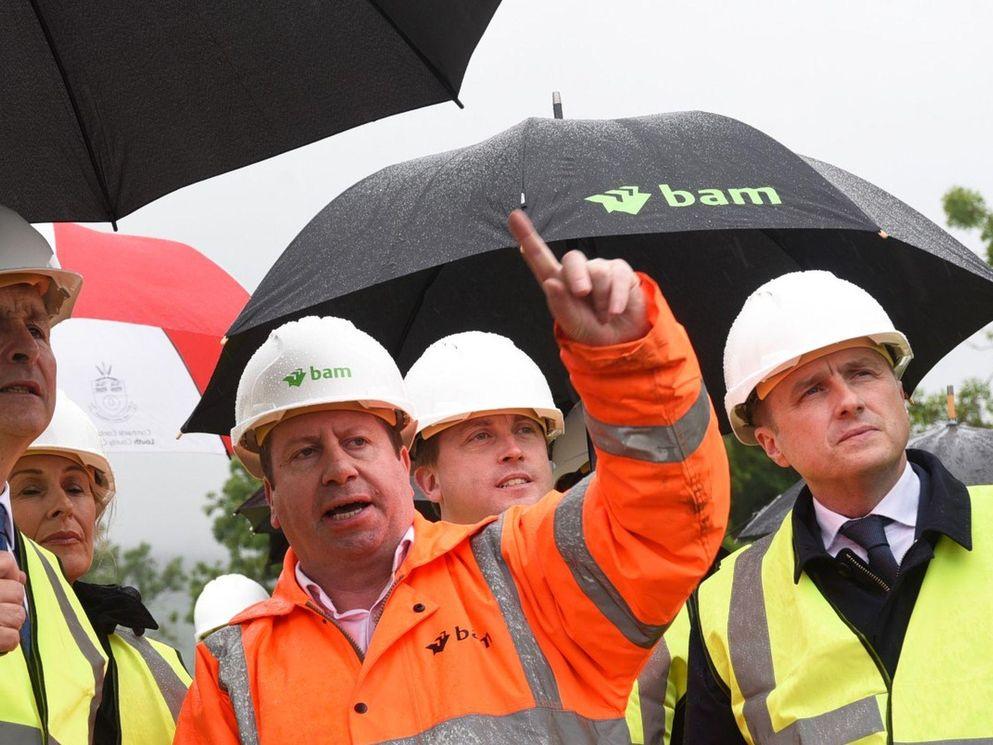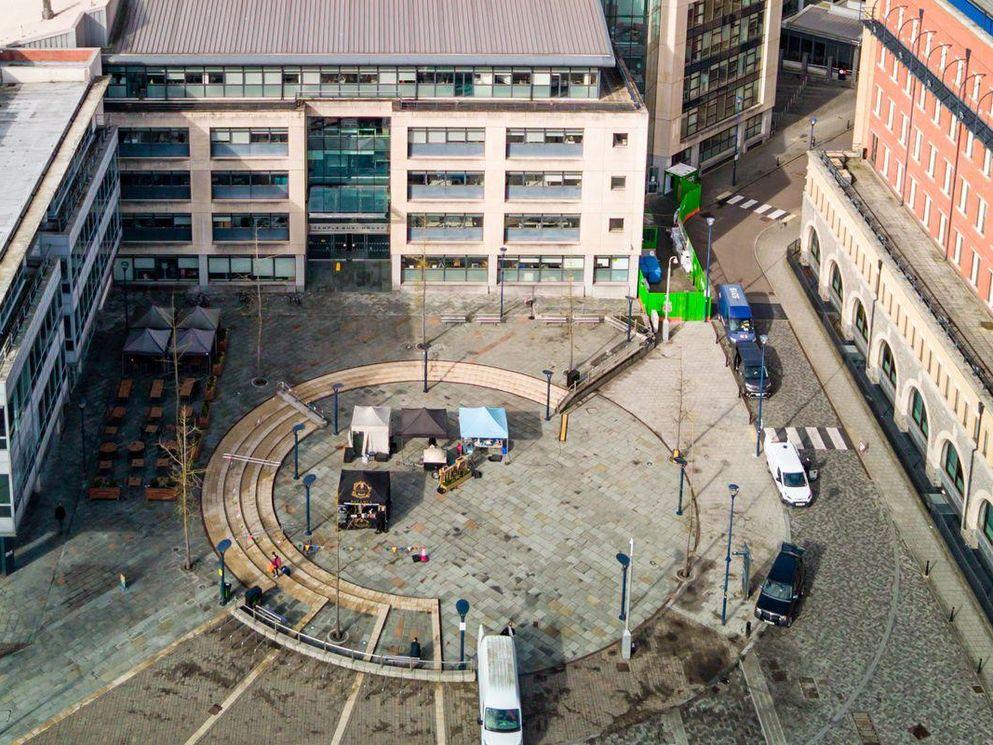Feyenoord Founders Consortium welcomes positive recommendation of scouts; consortium with BAM, AM and Siemens is ready for further steps in the realisation of De Nieuwe Kuip

Rotterdam, the Netherlands, 1 May 2014 - Feyenoord Founders Consortium (FFC) welcomes the recommendation of the scouts, Messrs Wim van Sluis, Jos van der Vegt and Hans Vervat, for the development of a renewed stadium for Feyenoord. After an extensive selection process, the scouts have given the client, Stichting 1 Feyenoord (representatives of BVO Feyenoord, Stadion Feijenoord N.V., Sportclub Feyenoord and supporters), the final recommendation to achieve the radical renovation of the current stadium with Feyenoord Founders Consortium as partner, based on the plan of FFC for De Nieuwe Kuip. The FFC consists of BAM, AM and Siemens.
‘We are pleased that the scouts have given their recommendation for our approach after an intensive selection process’, says Marc de Vreede, director of BAM Utiliteitsbouw, on behalf of FFC. ‘Our plan is that Feyenoord, after a major renovation operation, will have the largest football stadium in the Netherlands, with a capacity of over 70,000 visitors. This will generate additional income and make Feyenoord structurally stronger. De Nieuwe Kuip will respect and strengthen the present Kuip, with its special atmosphere, traditions and Het Legioen as the twelfth man. It will be a modern stadium, with excellent facilities that will ensure that Feyenoord is ready for the future.’
Over the next six months, FFC will further elaborate the design, financing and commercial operation in close collaboration with all interested parties. The consortium shall also initiate consultations with the municipality on the licensing process and the requirements for, among others, the infrastructure and the parking facilities around the stadium.
Monument as a basis for ‘smart stadium’
The current stadium is the basis for the FFC design, which will remain visible on the inside and the outside. The monumental Kuip designed by Brinkman and Van der Vlugt will be extended, and the existing and new buildings will blend smoothly. Thanks to a high-tech membrane roof the stadium can be covered for events and multifunctional use. Feyenoord can continue to play in its own stadium during the construction phase. A smart logistics schedule will enable the building work to take place during the football season with minimum hindrance to visitors. The design therefore provides for a quick renovation of the lower stand, thus improving the facilities for the supporters on short term.
De Nieuwe Kuip will offer every visitor significantly better facilities than is currently the case. Rotterdam will be able to present itself once again as a host for international matches. The stadium also offers various promotional opportunities for other sports events, concerts and other large-scale events. By using modern technology according to the principles of the ‘smart stadium’, the comfort, safety and experience of the visitors in the stadium are given a new dimension. The outside of the stadium will consist of a ‘smart skin’ comprising LED lighting with moving images.
Sustainable strengthening of Rotterdam-Zuid
The new stadium will give a positive impetus to the economic and social strengthening of Rotterdam-Zuid. More work, better schooling and education, higher incomes and more attractive housing are spearheads of the national programme for Rotterdam-Zuid. In the plan for De Nieuwe Kuip, FFC has also given the initial impetus for the so-called Feyenoord DOCK with new sport, leisure and accommodation facilities in the immediate vicinity of the stadium. This will also generate additional income for Feyenoord and for the city as a whole. The stadium will meet high standards in terms of sustainability.
Supporters actively involved
After the presentation of the concept of De Nieuwe Kuip in late January, the plan has had many positive reactions from Feyenoord supporters. The website www.dekuipgroeit.nl has had over 50,000 visitors. Many have responded to the plan and made suggestions about, among others, the use of colour in the stadium, the distance to the pitch, the possibility of creating standing places, the desired facilities for the supporters during the matches and functions around the stadium to strengthen De Nieuwe Kuip. Based on these suggestions and the active dialogue with the supporters of Feyenoord, the consortium was able to fine-tune its plan in recent months. The coming period, FFC will remain in active discussion with the supporters and will gratefully make use of all ideas that live in the Feyenoord family.
Feyenoord Founders Consortium
The FFC consists of BAM, the area developer AM and Siemens. This consortium has been closely connected to Feyenoord for more than twenty years. The FFC was responsible for the redevelopment and realisation of the Kuip in the nineteen-nineties. The consortium members have been jointly involved in the development and construction of more than two hundred stadiums worldwide, including Auf Schalke (Gelsenkirchen), Allianz Arena (München) and Soccer City (Johannesburg).
Rooted in the Rotterdam region and as founder of Feyenoord, the FFC has supported Feyenoord on its own initiative over the past few years with its ambitions for the future: a stable financial base and increasing the players budget through the expansion and modernisation of the current stadium, and improving the facilities.
More information on FFC’s plan for De Nieuwe Kuip and high resolution illustrations are available on www.dekuipgroeit.nl.
Further information: Michel Westbeek, michel.westbeek@am.nl, +31 (0)30 609 72 22.



